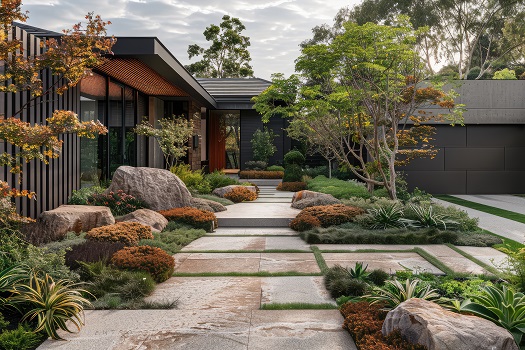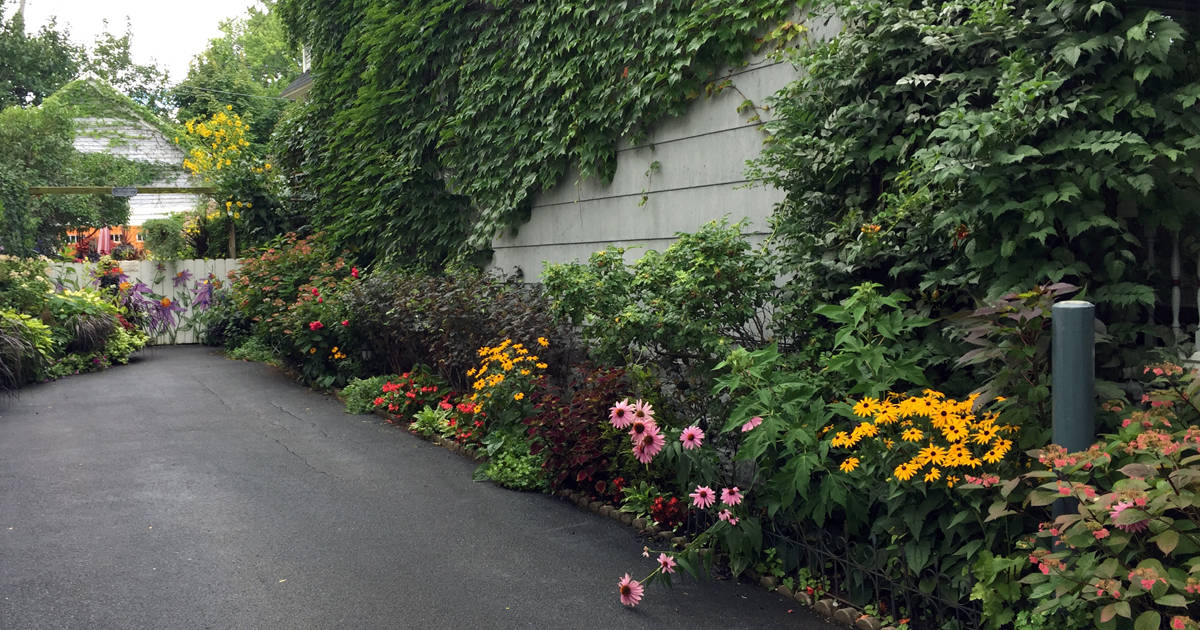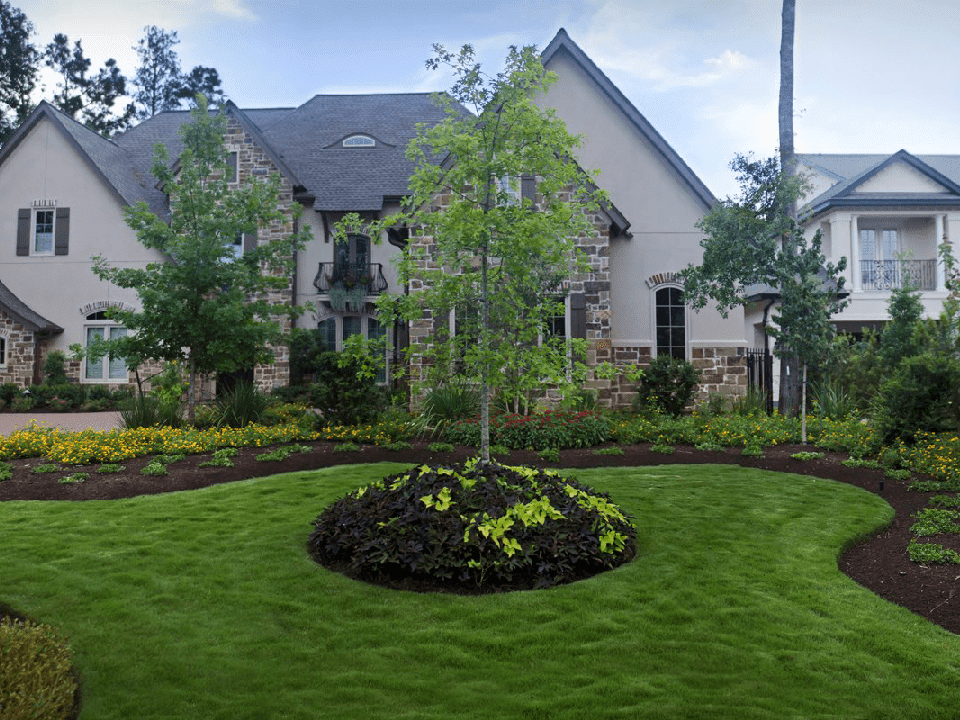The Greatest Guide To Hilton Head Landscapes
The Greatest Guide To Hilton Head Landscapes
Blog Article
8 Simple Techniques For Hilton Head Landscapes
Table of ContentsThe Best Strategy To Use For Hilton Head LandscapesHilton Head Landscapes Fundamentals ExplainedSee This Report about Hilton Head LandscapesAn Unbiased View of Hilton Head LandscapesSome Of Hilton Head LandscapesThe Ultimate Guide To Hilton Head LandscapesGetting The Hilton Head Landscapes To WorkEverything about Hilton Head Landscapes
Form compatibility is also a significant component of unity in designone or 2 strikingly various kinds benefit comparison and emphasis, but typically all other forms ought to have some similarities for a combined look. Structure refers to exactly how coarse or great the surface area of the plant or hardscape material really feels and/or looks.
Instances of plants with crude texture include philodendrons, agaves, bromeliads, hollies, palms, and hydrangeas. Characteristics that develop fine appearance include tiny vegetation; thin, strappy fallen leaves (grasses) or high, thin stems; little, dense branches and little branches; long stems (creeping plants); and small, delicate blossoms.
Hilton Head Landscapes for Dummies
Many plants are average texture, in that they can not be called having either rugged or great texture. They are defined by medium-sized fallen leaves with straightforward shapes and smooth edges. The average-sized branches are not largely spaced nor widely spaced, and the general type is generally rounded or mounding. Medium-textured plants function as a history to web link and unify the rugged- and fine-textured plants.

To make an area feel smaller, put the rugged appearances along the outer border and the fine appearances closest to the viewer. The detail of the coarse appearance makes the plants appear closer and makes the space really feel smaller. The perceived structure of plants can also change with the range from the plant.
Facts About Hilton Head Landscapes Revealed
Vibrant shades enhance the contrast and make the appearance show up coarser, while soft shades can squash structure. Hardscape with a coarse texturesuch as very harsh rocks and vibrant, big timberstends to make all plant material show up much more average distinctive. Developers typically develop an appearance research study (Figure 8) theoretically to help decide the plan of plant materials.
Color in plant product and hardscape includes passion and variety to the landscape. Shade is the most noticeable component in the landscape and is usually the emphasis of a lot of home owners; however, it is additionally the most momentary element, typically lasting only a couple of weeks a year for individual plants.
Not known Factual Statements About Hilton Head Landscapes
An easy description of the color wheel includes the three primaries of red, blue, and yellow; the three secondary colors (a mix of 2 primaries) of environment-friendly, orange, and violet; and 6 tertiary shades (a mix of one adjacent key and second shade), such as red-orange. Shade concept explains the relationship of colors to each other and how they should be used in a composition.

Analogous (in some cases called unified) color plans are any type of 3 to 5 shades that are adjacent on the color wheel, such as red, red-orange, orange, yellow-orange, and yellow, or blue, blue-violet, and violet (bluffton landscaping). The shades are associated to each other since they normally consist of two main shades blended to form a secondary and two tertiary colors, which indicates they share usual properties
They often tend to have high contrast in between them. One of the most usual sets are violet and yellow, red and eco-friendly, and blue and orange. Complementary colors are often located naturally in flowers; a common pair is yellow and violet. Shade is located in the blossoms, vegetation, bark, and fruit of plants.
The Only Guide to Hilton Head Landscapes
Green vegetation in all its different shades is the leading color by amount, however other shades catch attention more easily since of their high contrast to the color green. Shade is likewise found in structures, rocks, pavers, timber, and furnishings. Many shades in natural materials, such as stone and timber, are generally low-key and have a tendency to be variations of brown, tan, and light yellow.
Color is a crucial component for producing passion and selection in the landscape. Colors have buildings that can affect emotions, spatial perception, light top quality, equilibrium, and focus. One residential or commercial property of color is defined about temperaturecolors appear to be great or warm and can impact emotions or feelings. Amazing colors tend to be calming and ought to be made use of in areas for relaxation and serenity.
Not known Factual Statements About Hilton Head Landscapes
Cool colors have a tendency to recede and are regarded as being further away, making a room really feel bigger. Shade can additionally be made use of to record focus and straight sights.
Intense yellow, which has the highest intensity, also has a high comparison with all various other shades (commonly explained as a "pop" of color) and ought to additional hints be used moderately. A tiny quantity of intense color has as much aesthetic weight as a big amount of a more restrained or weaker color.
Similar (occasionally called unified) color systems are any type of three to five shades that are surrounding on the shade wheel, such as red, red-orange, orange, yellow-orange, and yellow, or blue, blue-violet, and violet. The colors relate to every other because they generally consist of two primary shades mixed to create an additional and two tertiary colors, which implies they share common properties.
See This Report about Hilton Head Landscapes
Complementary shades are often discovered naturally in blossoms; a typical set is yellow and violet. Shade is found in the flowers, foliage, bark, and fruit of plants.
Environment-friendly vegetation in all its numerous tones is the leading shade by quantity, but other colors capture interest quicker due to their high contrast to the color green - Landscaping bluffton sc - https://myanimelist.net/profile/h1tnhdlndscps. Shade is likewise discovered in structures, rocks, pavers, wood, and furniture. Many shades in natural products, such as rock and timber, are usually muted and have a tendency to be variants of brown, tan, and light yellow
5 Simple Techniques For Hilton Head Landscapes
Shades have residential properties that can affect feelings, spatial assumption, light high quality, equilibrium, and focus. Great shades have a tendency to be calming and need to be made use of in locations for leisure and tranquility.
The "temperature level" of colors can likewise impact the perception of range. Cool colors often tend to decline and are perceived as being farther away, making a room really feel larger. Warm colors tend to breakthrough and are regarded as being better, making a space really feel smaller sized. Shade can likewise be utilized to catch attention and straight views.
As an example, intense yellow, which has the highest possible strength, additionally has a high contrast with all other colors (typically defined as a "pop" of shade) and should be conserved. A percentage of intense color has as much aesthetic weight as a big amount of a much more suppressed or weaker color.
Report this page